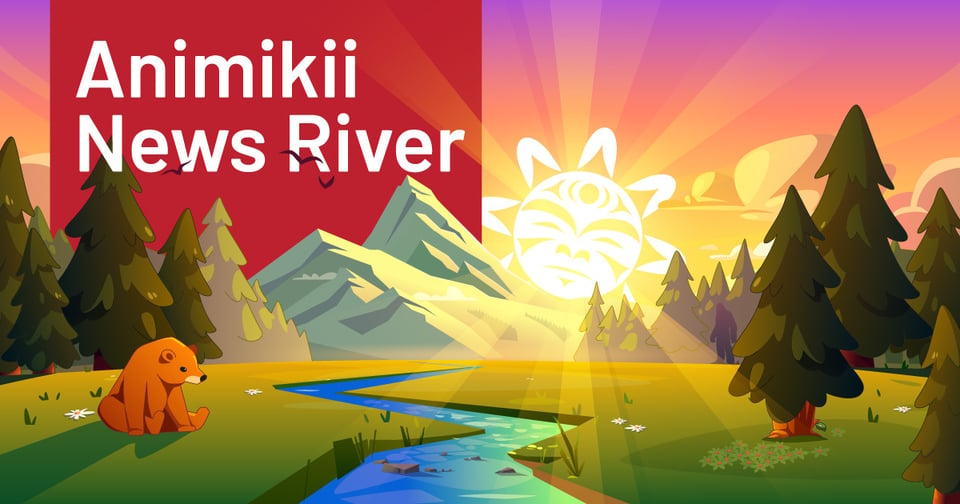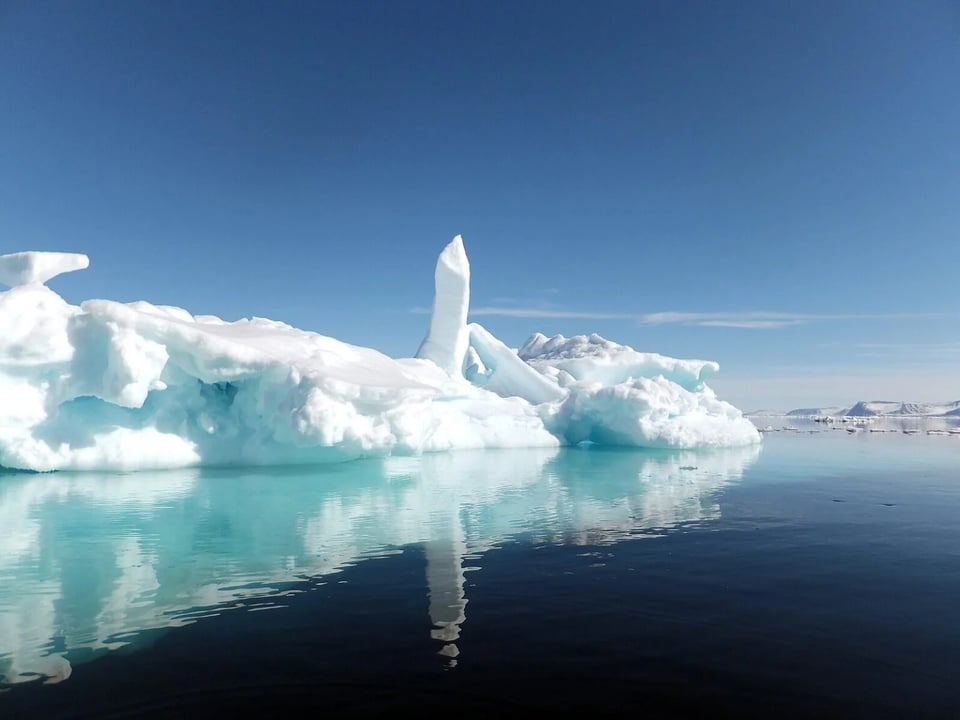Disaggregating Inuit Data for Self-Determination
“Inuit must not be erased in statistics” says ICC Chair Sara Olsvig

Boozhoo News River Readers,
We’re in the deep weeks of summer, a season abundant in OOO replies and growing fall ambitions in the (not so) distant future. We hope this week’s news offers a moment of pause by the side of the river - in your inbox.
Thanks for being here!
This week’s stories include:
How artificial intelligence (AI) is rapidly transforming urban planning processes, emphasizing the need for ethical frameworks that honor diverse ontologies and spiritual connections to land.
Doctoral research investigates Indigenous helpers, the nature of their helping work and the role of language and dialogue in the relationships they form.
A collaborative research project assessed the impact of colonization on the Burrard Inlet ecosystem since Europeans first settled in the area.

ICC calls for Inuit data sovereignty and protection of traditional economies at UN expert mechanism
The big picture: Inuit Circumpolar Council (ICC) participated in the 18th Session of the United Nations Expert Mechanism on the Rights of Indigenous Peoples (EMRIP) held 14-18 July 2025 in Geneva. The EMRIP is composed of seven independent experts and meets annually to engage with states, Indigenous Peoples, organizations, civil society, and academia. This session brought global focus to the implementation of the United Nations Declaration on the Rights of Indigenous Peoples (UNDRIP), including the right to maintain and protect traditional economies, as well as the right of Indigenous Peoples to data, including data collection and disaggregation.
Why it matters: In its report, EMRIP affirmed that data are a powerful cultural, strategic, and economic resource. The right to data includes the right to access, control, repatriate, and govern all forms of data about, from, or affecting Inuit – ranging from health and education to language, culture, environment, natural resources, and economy. This includes reclaiming cultural artifacts, historical records, and human remains held outside Inuit control. In their intervention, ICC strongly affirmed that Inuit data sovereignty is a fundamental component of self-determination, equity, and justice across Inuit Nunaat.
Key points:
In their report, EMRIP expressed concern that many states fail to disaggregate data due to lack of legal recognition of Indigenous Peoples as distinct peoples with collective rights.
In the context of the right to development, disaggregated data are essential to enabling self-determination. Disaggregated data – broken down by ethnicity, identity, gender, geography, and other relevant factors – are vital for informed decision-making and community-driven development.
Such data enable Indigenous Peoples to monitor changes, assess policies and programs that affect them, and advocate for necessary services.
What they’re saying: “For Inuit, the right to data, including data collection and disaggregation, is a necessary condition for equity, justice, and self-determined development,” says ICC Chair Sara Olsvig. ”Today there is no comprehensive data on Inuit who relocate to Denmark. This poses multiple challenges in addressing the needs of Inuit in Denmark. Similarly, in Alaska, Inuit – including Iñupiat and Yupik – are frequently grouped under broader Indigenous Peoples categories, erasing their distinct identities and realities. Inuit must not be erased in statistics.”
Learn more: Read the full article here.
Curated Articles:
In the Canadian Arctic, we posit that locally-relevant Indigenous data governance frameworks are necessary in light of a paucity of guiding practices and policies for environmental researchers working in partnership with communities. To centre data governance decision-making in a community and to support Indigenous self-determination as affirmed in federal commitments, Fisheries and Oceans Canada researchers and the Paulatuk Hunters and Trappers Committee (Paulatuk, Inuvialuit Settlement Region) co-developed a data governance Statement of Shared Understanding for Traditional Knowledge Documentation specific to an interview project. We detail the steps and dialogue that characterized the creation of this statement over several months, so that others may build from these efforts when appropriate. Second, we highlight five emergent considerations that may strengthen future data governance efforts and inform policy. We offer these insights to advance evolving Indigenous data governance conversations, initiatives, and policies in institutional and community spaces.
‘Indigenous helpers’ are essential to culturally responsive mental health care
Within my own journey of mental health recovery, I found healing alongside helpers across Turtle Island, rather than within the confines of a mental health institution or pages of a manualized treatment protocol. It’s common for First Nations Peoples to refer to “helpers” or “helping work” when describing individuals who provide relationally-based support to others. As a community psychotherapist and later PhD student, I became increasingly interested in these helpers as unsung heroes of community wellness. They didn’t necessarily have a graduate degree in a mental health field, and they were rarely recognized or compensated for their efforts, yet they made great personal sacrifices to support the healing journeys of those around them. My doctoral research investigates who these Indigenous helpers are, the nature of their helping work and the role of language and dialogue in the relationships they form with those they help.
Indigenous Youth Complete 310-Mile Klamath River Journey
Over a hundred family and community members gathered on the sand spit shore below Requa Village on the Yurok Reservation, where the Klamath River meets the Pacific Ocean, to welcome 120 Indigenous youth kayakers over that last 30 days, making history as the first people to descend over 310 miles down the free-flowing Klamath River. “This is a historical moment for us,” said Susan Masten, former Yurok Tribal Chair, past president of the National Congress of American Indians, and the president and co-founder of Women Empowering Women for Indian Nations. “We haven’t had the opportunity yet to celebrate the dams coming down as a people… This moment in time, with these youth that have traveled 30 days, the river has guided them down to us,” said Masten.
Neo-colonial intelligence: How AI risks reinforcing spatial injustices in a digitally divided world
Artificial intelligence (AI) is rapidly transforming urban planning processes, yet its deployment risks reinforcing historical patterns of spatial injustice. This Viewpoint critically examines the colonial traits embedded in AI systems applied to urban governance, arguing that algorithmic models often replicate epistemic violence, territorial exclusion, and data-driven extractivism. Drawing from political theory, ecotheology, and postcolonial urbanism, it highlights real-world cases, including smart city projects and geospatial data systems that illustrate how AI perpetuates neocolonial spatial dynamics. The piece calls for reorientation towards decolonial, participatory, and ecologically-centered AI design practices, emphasizing the need for ethical frameworks that honor diverse ontologies and spiritual connections to land. Without such critical engagement, AI risks becoming a new architecture of digital colonialism rather than a tool for just, inclusive, and sustainable urban futures.
Colonization devastated biodiversity, habitats and human life in the Pacific Northwest
Burrard Inlet, known traditionally as səl̓ilwəɬ (Tsleil-Wat) in the hən̓q̓əmin̓əm̓ language, has been the heart of the traditional, ancestral and unceded territory of the səl̓ilwətaɬ (Tsleil-Waututh Nation) since time immemorial. The inlet is a water system that wraps through and around what we now know today as the city of Vancouver on the coast of British Columbia. The ecosystem is home to essential habitats for species like Pacific herring, Pacific salmon and harbour seals. Burrard Inlet is also host to many commercial, industrial and urban developments and interests. This includes the Port of Vancouver, one of the largest marine ports in Canada and the terminal end of the Trans Mountain Pipeline. Today, more than 2.5 million people call the area home and it’s a popular tourism spot. This is relatively new, however. Colonization and urbanization have caused intense change and damage since Europeans first settled in the area in around 1792, with most changes occurring since the 1880s. Through a collaborative research project between the Tsleil-Waututh Nation, the University of British Columbia, engineering consultant firm Kerr Wood Leidal and Mitacs Canada, we assessed the impact of colonization on the Burrard Inlet ecosystem since Europeans first settled in the area. When we look at the cumulative effects of specific events, we are adding the individual impacts of each event together to get a fuller picture of how colonialism impacted the ecosystem.

Add a comment: